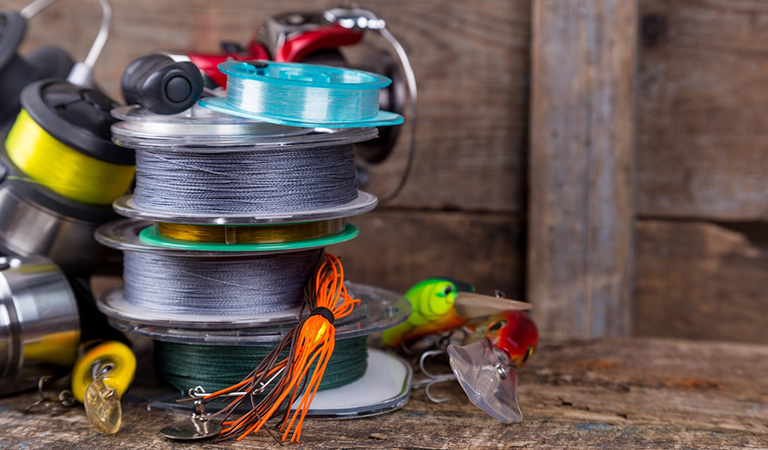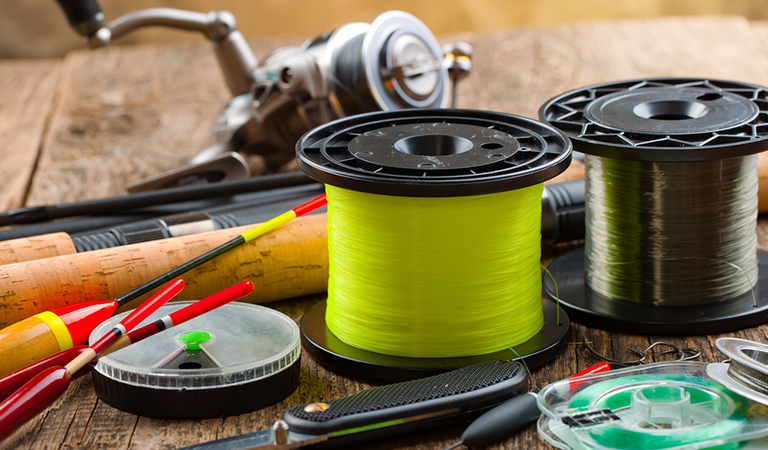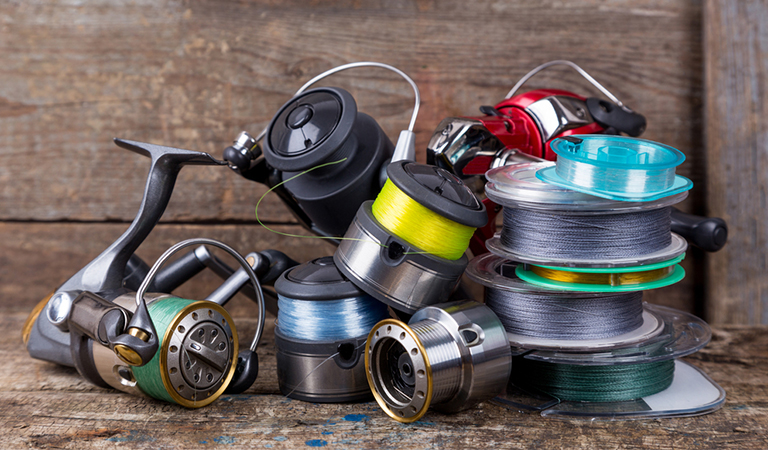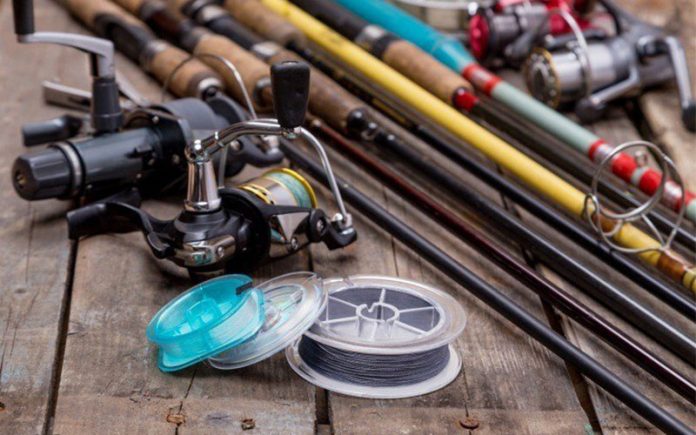What is the one thing that connects you to the fish you’ve just caught? It is the fishing line that you use for your fishing rod. These days, fishing lines come in numerous types and serve different purposes. When going ice fishing, choosing a fishing line that caters to your needs is of utmost importance. It’s also important to know what kind of fishing line is compatible with your hooks and your fishing rods and poles. Often these aspects are ignored, but fishing enthusiasts like me take utmost care regarding what fishing line to use. When you’re done reading this article, you will get a better picture of what I’m talking about.
You need to consider a few aspects when you’ve selected a destination for ice fishing. You need to think about the environment you have to deal with, what the surroundings would be like, whether the water will be hard and clear, and what type of fish you are aiming to catch. You should also consider other physical features of the fishing line, such as strength, stretch, diameter, color, and abrasion resistance.
Types of Fishing Lines You Should Be Familiar With

Each type of fishing line has its own pros and cons, so pick a fishing line that best suits your needs and budget.
1. Monofilament Lines
One type is the monofilament, also called Mono in short. Mono is extremely popular these days and can be used for all kinds of fishing. You can make various types of knots with it quite easily. It is also easier to cut and cast better, making it a favorite among the beginners.
Mono fishing lines have the ability to camouflage in the water very easily. They also stretch well, but their high stretching ability can cause difficulty when you want to set up your hook. The only negative aspect of mono fishing lines is that they’re more prone to abrasion. Before using this type, you should check for any wear and tear on the fishing line. If you forget to do that, while fishing, you’ll end up having to tie up the knot quite a number of times. Mono is also cheaper than the other types of fishing lines out there.
2. Super Lines
There are super lines that have almost no stretch. These fishing lines can again be of two types – braided or fused – depending on the manufacturing process. These lines are also easier to set up with the hook. The only problem is that these lines have bigger diameters and can easily be visible for the fish. Braided fishing lines should be carefully tied into knots. Always use knots that the manufacturer’s recommended so the chances of knots coming off are reduced to a great extent. These lines have almost no spool memory and they’re ideal for use with stick baits or jerk baits.
3. Fluorocarbon Lines
Fluorocarbon lines are excellent for casting. They’re almost invisible in the water aside from being very tough and durable. You wouldn’t have to worry about re-tying the knots whatever the type of fishing pole you use. They can sink quickly without absorbing water. The only problem is that this type of fishing line is very expensive.
How to Set up Fishing Line with the Necessary Accessories?

If you have a fishing line of your choice by now, it is time to add a few accessories to your fishing line and prepare yourself for ice fishing!
Attach a Hook to Your Fishing Line
First and foremost, as part of knowing how to set up a fishing line, you will need to attach a hook to your fishing line. But that is no easy task. You will need to be familiar with the various kinds of hooks and knots that go with them, to make sure your hook stays connected even when a fish is caught. There are three kinds of hooks – single, double and trouble, and each kind can catch certain kinds of fish. Depending on the type of fish you want to catch in ice, you have to select the appropriate hook. You should also know what type of knot goes best with the one you picked. Here is a list of knots that you can try:
- Improved clinch knot
- Palomar knot
- Grinner knot
- Turle Knot
- Blood knot, or
- Double surgeon’s knot
Attach a Sinker
Next, you should attach a sinker. Sinkers can be made of tungsten or steel and they can slide up and down the fishing line. They come in various shapes and sizes, such as pyramid or bullet-shaped sinkers. Often worms are attached to bullet-shaped sinkers. Sinkers allow for better casting weight and let your fishing line cover a more desired depth. But you should not use them if you’re using heavy bait or artificial lures.
Make Use of a Bobber
Get yourself a bobber or even better, a tip up. Plastic bobbers are very common and they also come in various sizes and shapes, such as round, teardrop and oval. Some bobbers can be hooked to the fishing line, some need to be tied and some can slide up and down the fishing line. Remember that bobbers are not so necessary but if you are a beginner, you should use it.
Tip ups are particularly helpful for fishing. For ice fishing, using tip-ups is a better idea because they can suspend a frozen or live bait at a particular depth into a hole made by an ice auger. It can detect the presence of fish and tips up a flag. The advantage is that the user doesn’t have to be in contact with the rod to catch fish. This way, tip up fishing allows the user to catch multiple fish with multiple rods and tip-ups in one area.
You Can Also Use a Swivel and a Leader
The fishing line can often twist and turn and form tangled parts, which can cause it to wear down. Swivels can prevent this i.e. they twist and turn themselves but keep the fishing line intact. A leader is a small piece of wire or monofilament material that helps in luring a bait.
By gathering these materials and placing them onto the fishing line sequentially, you can prepare it for fishing. Attach it to your fishing rod and once you’re done, you can move on to your fishing game.
What About Ice Fishing?
Since ice fishing is quite a different kind of fishing style, you should consult with an experienced fishing enthusiast before setting out into the cold. After picking a spot for fishing, you should choose what kind of fish you would like to catch. Depending on that, you should select your hook and tie it into a knot that is less likely to tear. Of course, this requires the use of a strong fishing line. So fishing lines are extremely important if you want to pay undivided attention to your ice fishing skills.

However, besides fishing lines, what you add to your fishing lines is just as important. If your fishing lines are too visible it could scare fish away. So, you’ve to make sure that your fishing line is near-invisible. It should be somewhat heavy so that it can reach longer depths, without wearing the fishing line material. Lastly, if you want your fishing game to be stronger and catch more fish, you can try using more fishing rods and ice fishing tip-ups and then cover one area. Just see what you get!










































